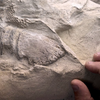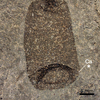Ozone Layer on the Upswing

A visualization of the ozone layer hole as it stood in 1985. (Source: NASA)
Ten miles above the Earth’s surface, nestled between the stratosphere and the mesosphere, an invisible shield of gas protects our planet from the worst of the sun’s ultraviolet radiation. The ozone layer was first discovered in 1913, but it truly entered the public consciousness in 1976 when scientists made an alarming discovery. The ozone layer was rapidly thinning over the South Pole due to toxic emissions spewed into the atmosphere by humans. If urgent action was not taken soon, the entire ozone layer would be destroyed, with catastrophic results.
Needless to say, this apocalypse did not come to pass; the dangerous chemicals that were leaching a hole in the atmosphere were nearly entirely phased out. And just recently, the United Nations has announced the thinned layer of atmosphere is on pace to completely recover by 2050. This is about the same year that, had dramatic action not been taken on the issue, the ozone layer would have all but vanished, exposing the Earth to dangerous rays from the sun. Its restoration stands as a milestone of human cooperation and success.

Scientists Joe Farman, Brian Gardiner and Jon Shanklin, who in 1985 definitively confirmed the ozone hole's existence. They are standing next to a Dobson spectrophotometer, used to measure ozone. (Source: British Antarctic Survey)
Ozone forms out of an interaction between oxygen and ultraviolet light emanating from our sun. It acts as a filter, blocking two more harmful types of ultraviolet light from reaching the Earth’s surface. Its depletion in this case was caused by CFCs or chlorofluorocarbons, an industrial compound with a variety of uses, from aerosol propellants to coolant in refrigerators and air conditioning systems.
When CFCs rise into the atmosphere, a cascade of chemical reactions take place. Ultraviolet light breaks CFCs down into chlorine, which in turn binds with oxygen particles in ozone to form chlorine monoxide, which then goes on to self-replicate and spread like a virus, severing oxygen from more ozone particles. Because CFCs can take decades to dissipate, the problem quickly snowballs and grows exponentially such that in the course of a few decades much of the ozone layer could be destroyed.

A Montreal Protocol meeting. The treaty continues to be amended to include other chemicals found to be dangerous to the atmosphere. (Source: The Associated Press)
By 1985, the ozone layer over Antarctica had reduced its mass in half, with the ominous threat of it being completely destroyed by 2050. That would mean widespread environmental collapse on an unprecedented scale. Ecosystems would die out and rates of skin cancer would make direct sunlight a health hazard. With the entire world at risk, this crisis demanded an international solution. Reforms made in one country would be useless without the cooperation of the rest of the world.
The Montreal Protocol is often held up as the most successful treaty in the United Nation’s history. Following its unanimous ratification in 1987, CFCs and other ozone-imperiling chemicals have been rapidly phased out, with several amendments adding more chemicals to the roster. Today the treaty is a reminder of an unqualified success of diplomacy and international cooperation, and stands as a model for tackling other global crises like climate change.
Read More!
Nilsson A. Ultraviolet Reflections : Life Under a Thinning Ozone Layer. Wiley; 1996.
Featured Product
Joe Frazier Boxing Glove
Cool Things!

Is “Paul is Dead” Dead?: Unpacking One Of Pop Culture’s Most Enduring Conspiracy Theories

Scientists Discover Hooves and Skin in Preserved Dinosaur "Mummies!"
A dinosaur discovery just in time for Halloween! In a new analysis of a group of fossils from Wyoming, Scientists have determined this group of fossils are dinosaur “mummies,” with preserved skin and even hooves.

Scientists Record a Bat Catching Birds Mid-Flight!
Bats, birds, screeches, oh my! In a reverse-Hitchcock twist, a new study reveals that a species of European bat catches and eats birds mid-flight.
Specimen Deep Dives

The House that Ruth Built: The Story of the Old Yankee Stadium

The Queen of the Skies: the Story of the Boeing 747

Old Ironsides: The USS Constitution and the Start of the U.S. Navy
Long Form Articles

The Artist Behind the Macintosh: Susan Kare and Apple Computers
While the two Steves, Jobs and Wozniak, are the most well known faces behind Apple computers, equally important to the products and culture of the company were those who crafted the experience of using their computers through design. The most notable of these visual architects was Susan Kare, a designer responsible for “humanizing” Macintosh computers.

Can I Lick It? Yes You Can!
Have you ever been unable to tell if a fossil was really a fossil, but you were too embarrassed to admit it? Have you ever wanted to lick a fossil just because, but you didn’t want to risk judgment from your peers? Well, good news! You can kill two birds with one stone! Licking a fossil can actually help you determine if it’s the real deal or just another rock.

Is It Legal To Own a Meteorite: How to Start Your Outer Space Collection!
Meteorites are some of the rarest geological specimens to be found on Earth. Of course, since these stones are not of our world, purchasing them can sometimes be a confusing process. Is it legal to own a meteorite? In short, yes! Read on for help starting your cosmic collection!


















